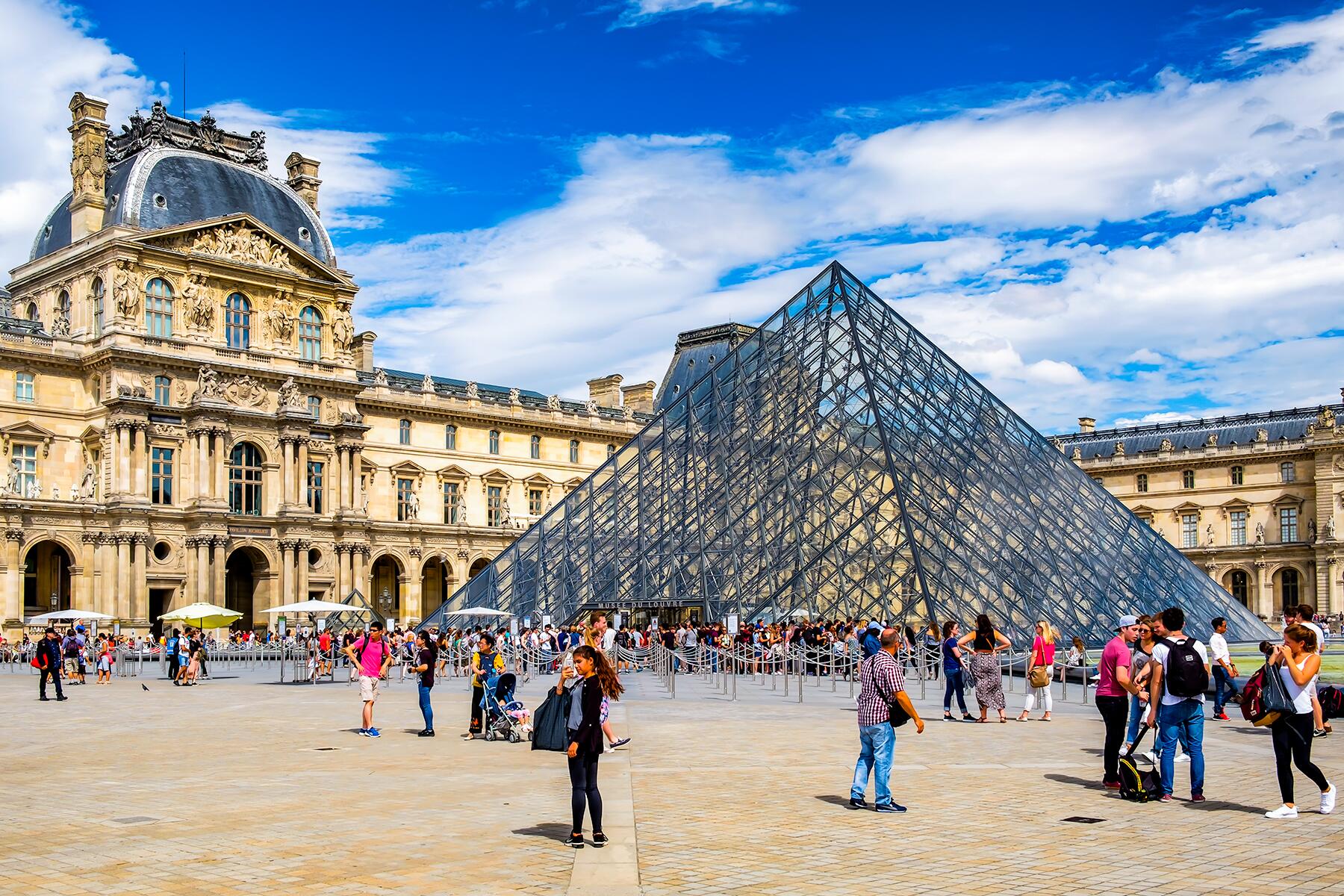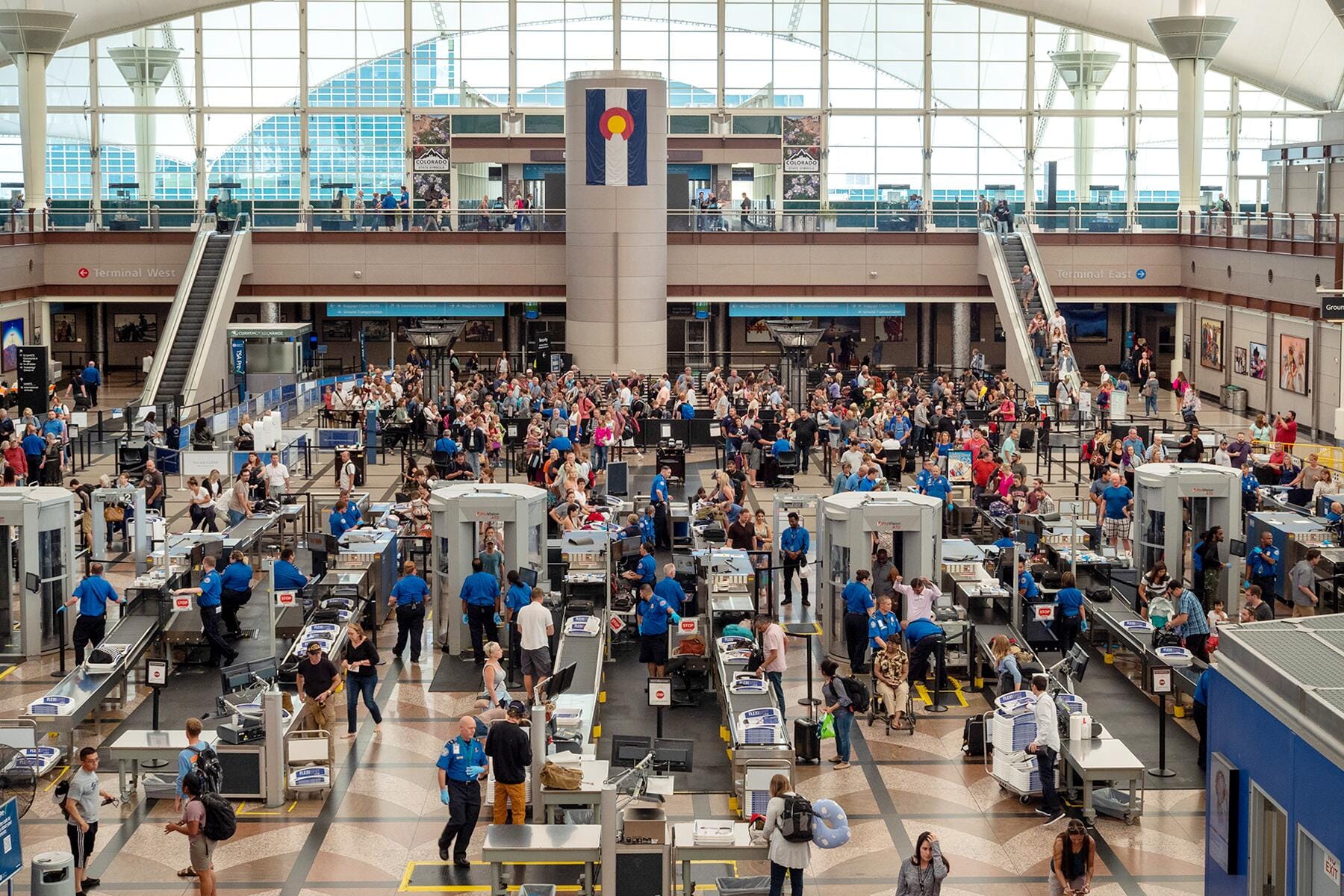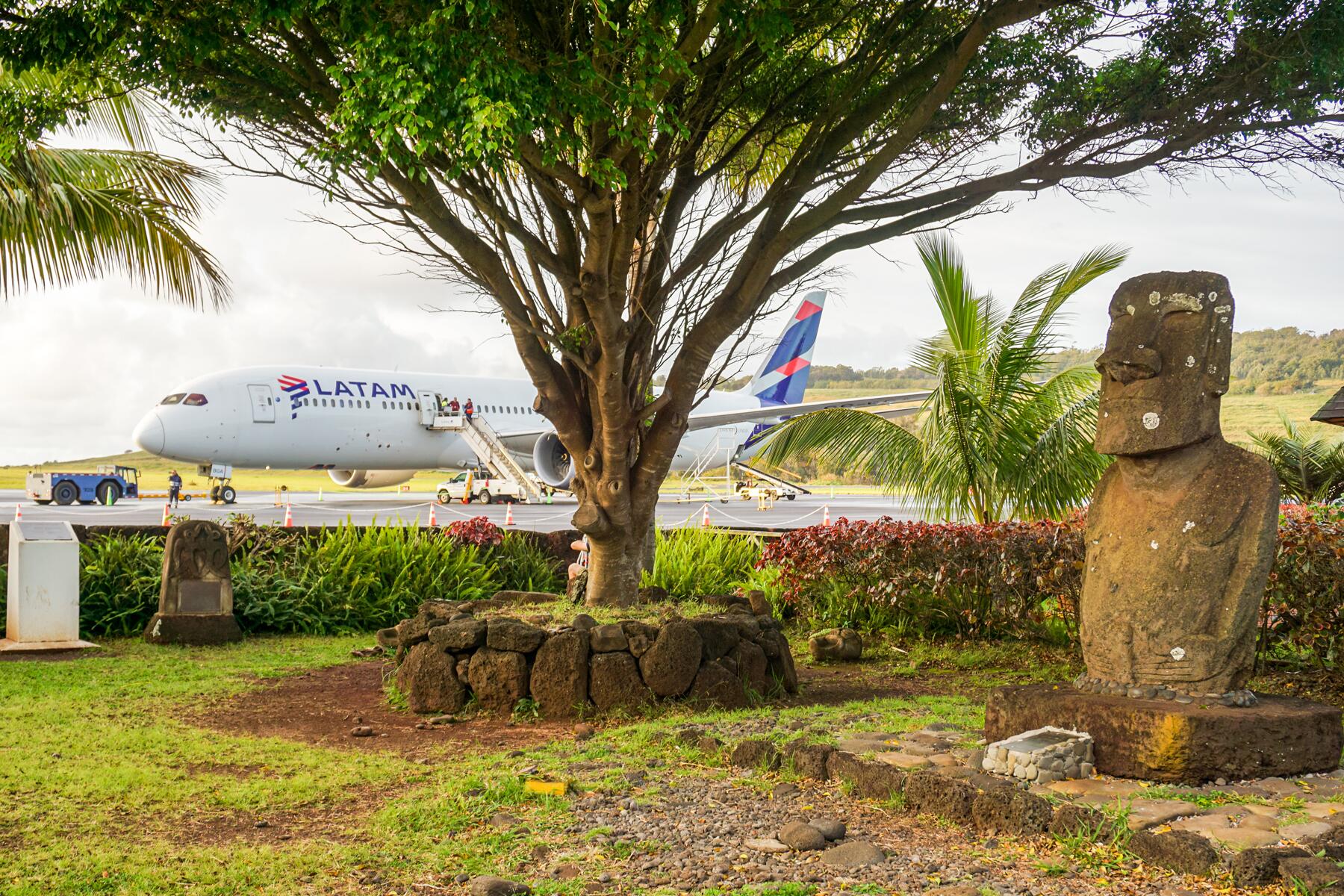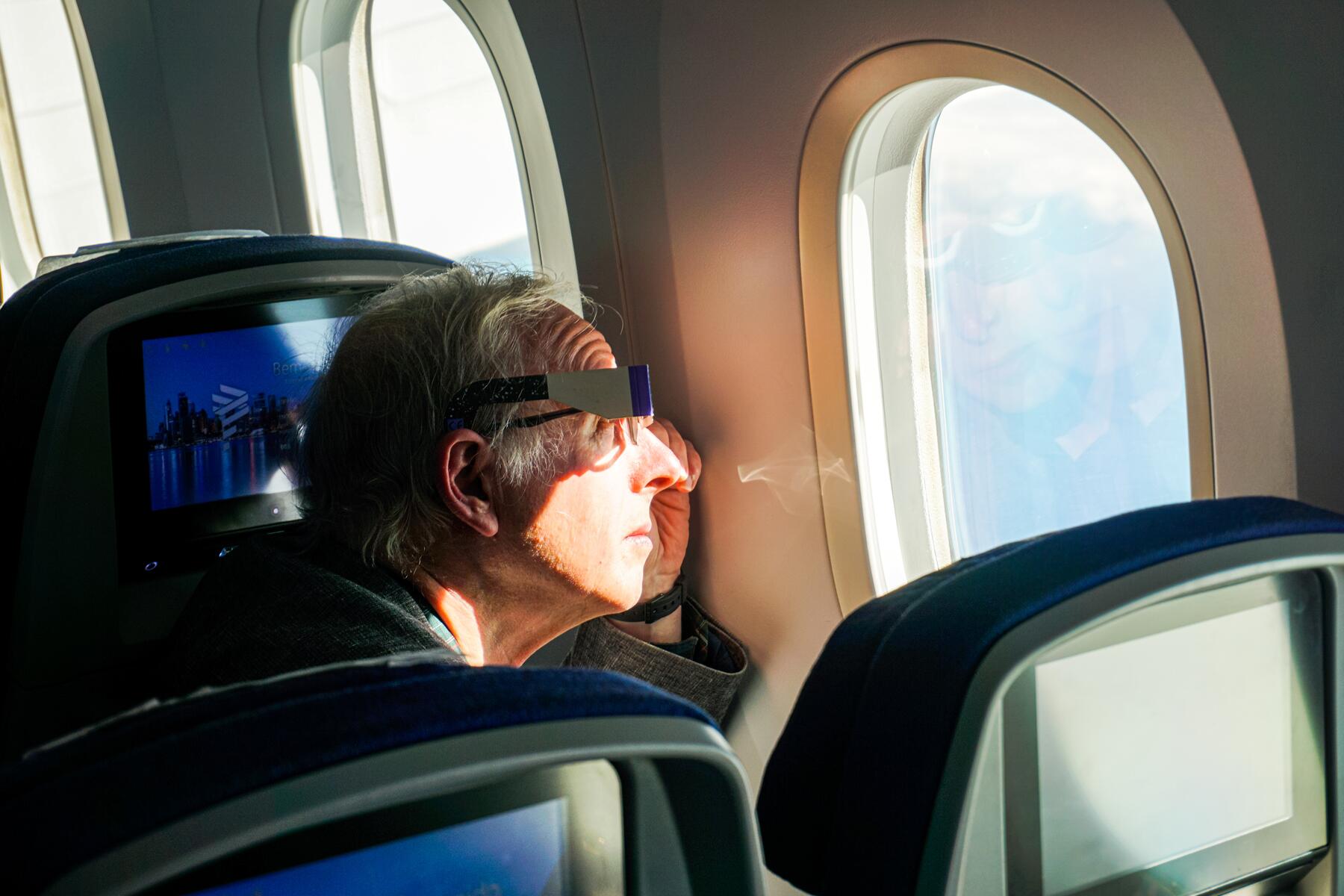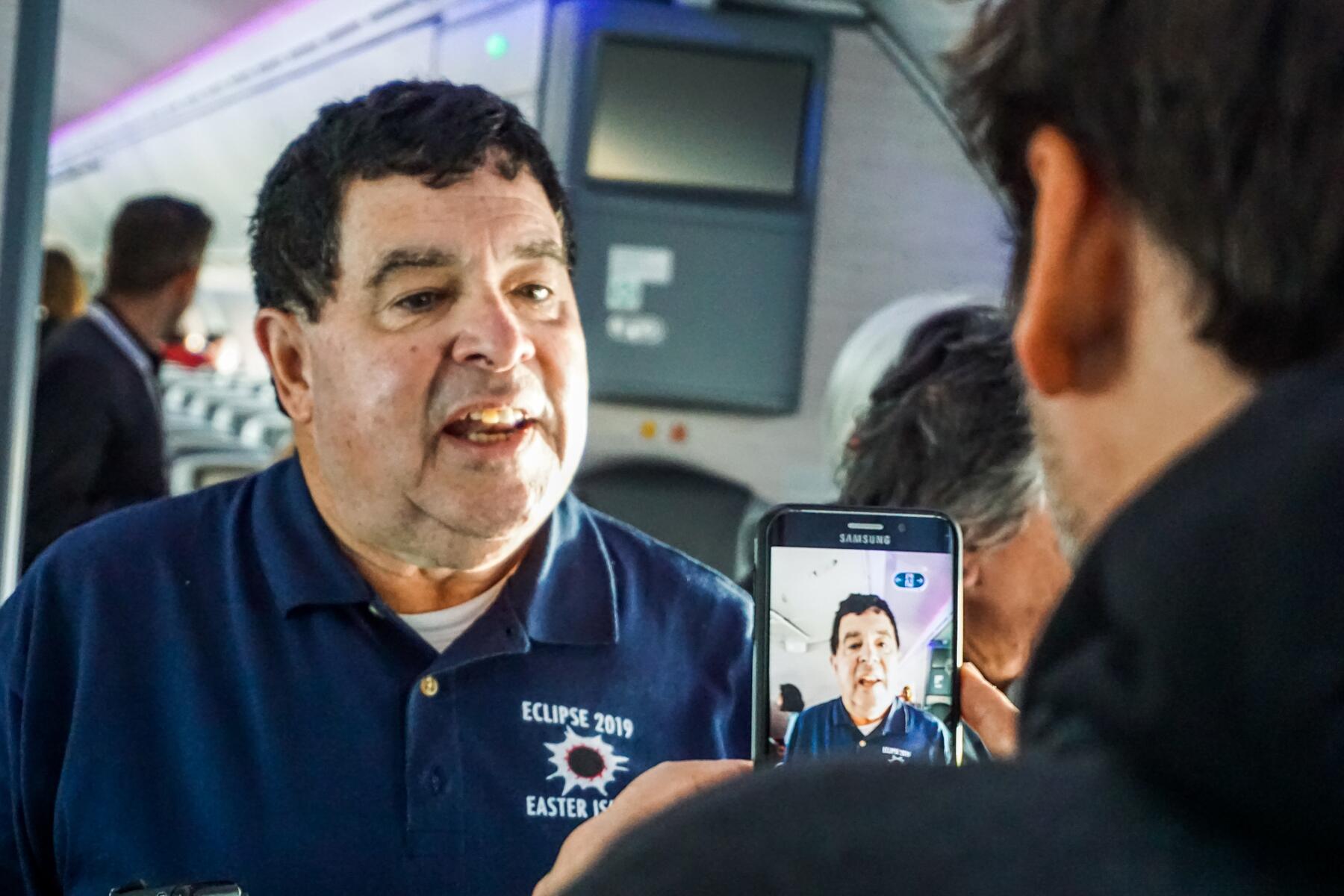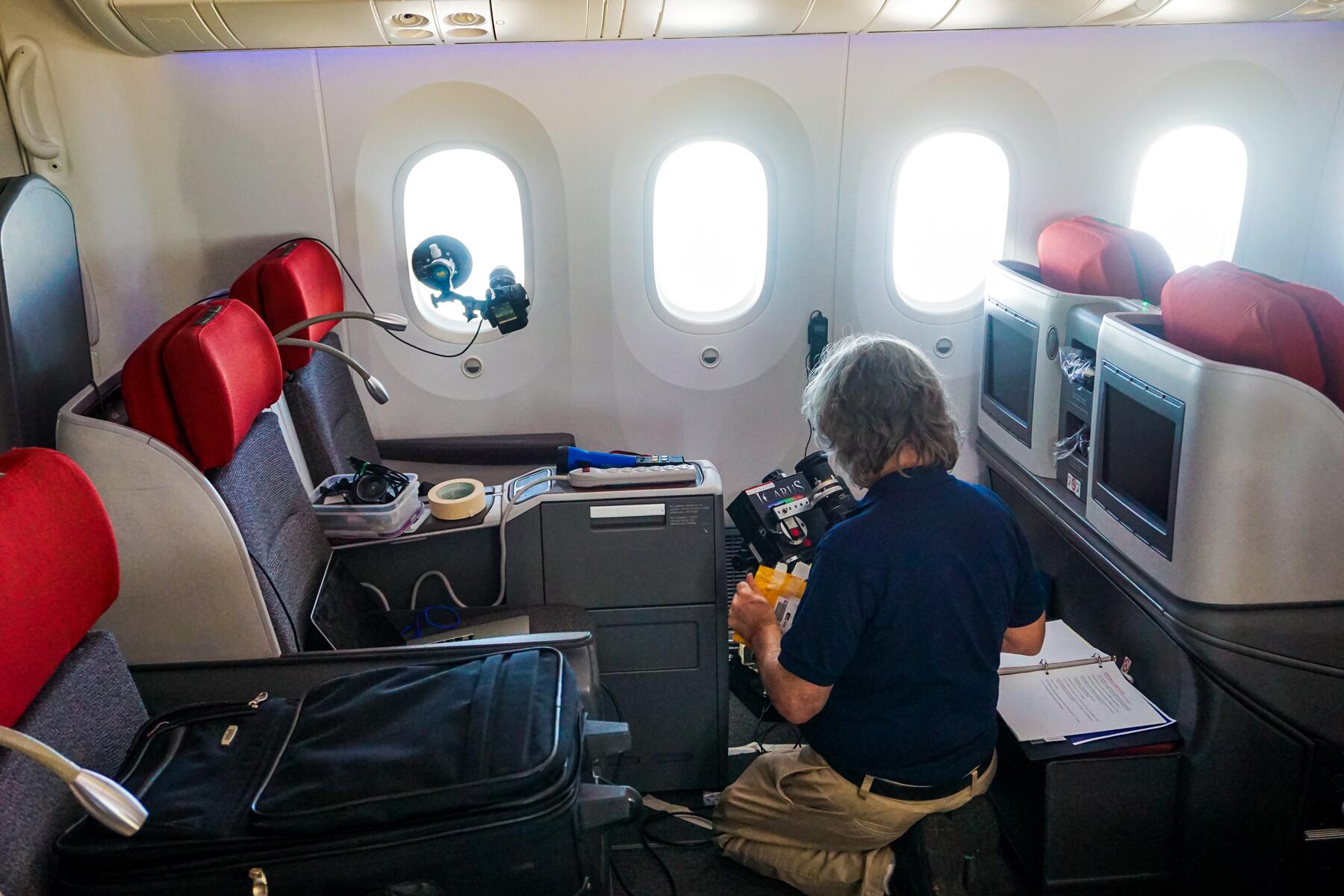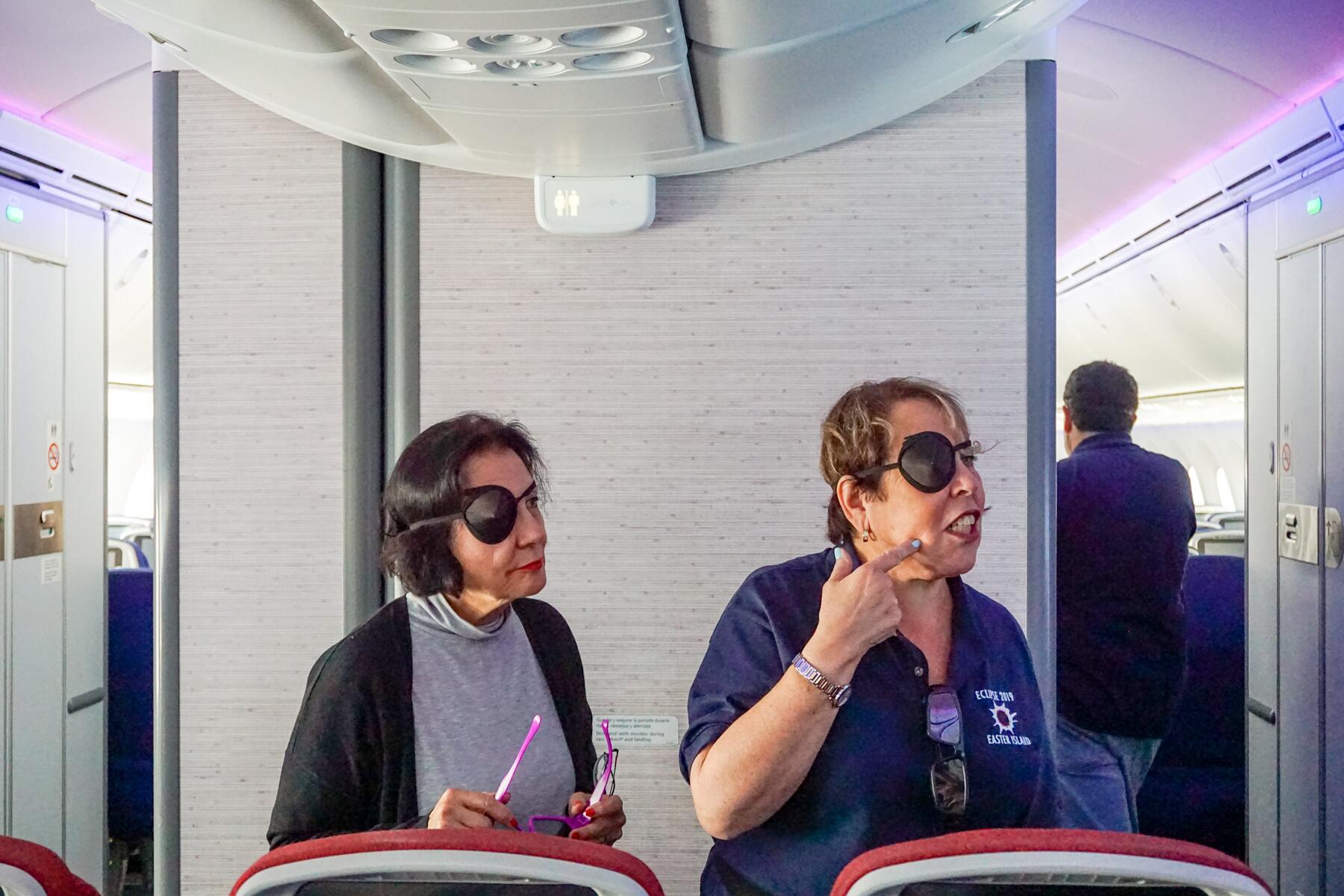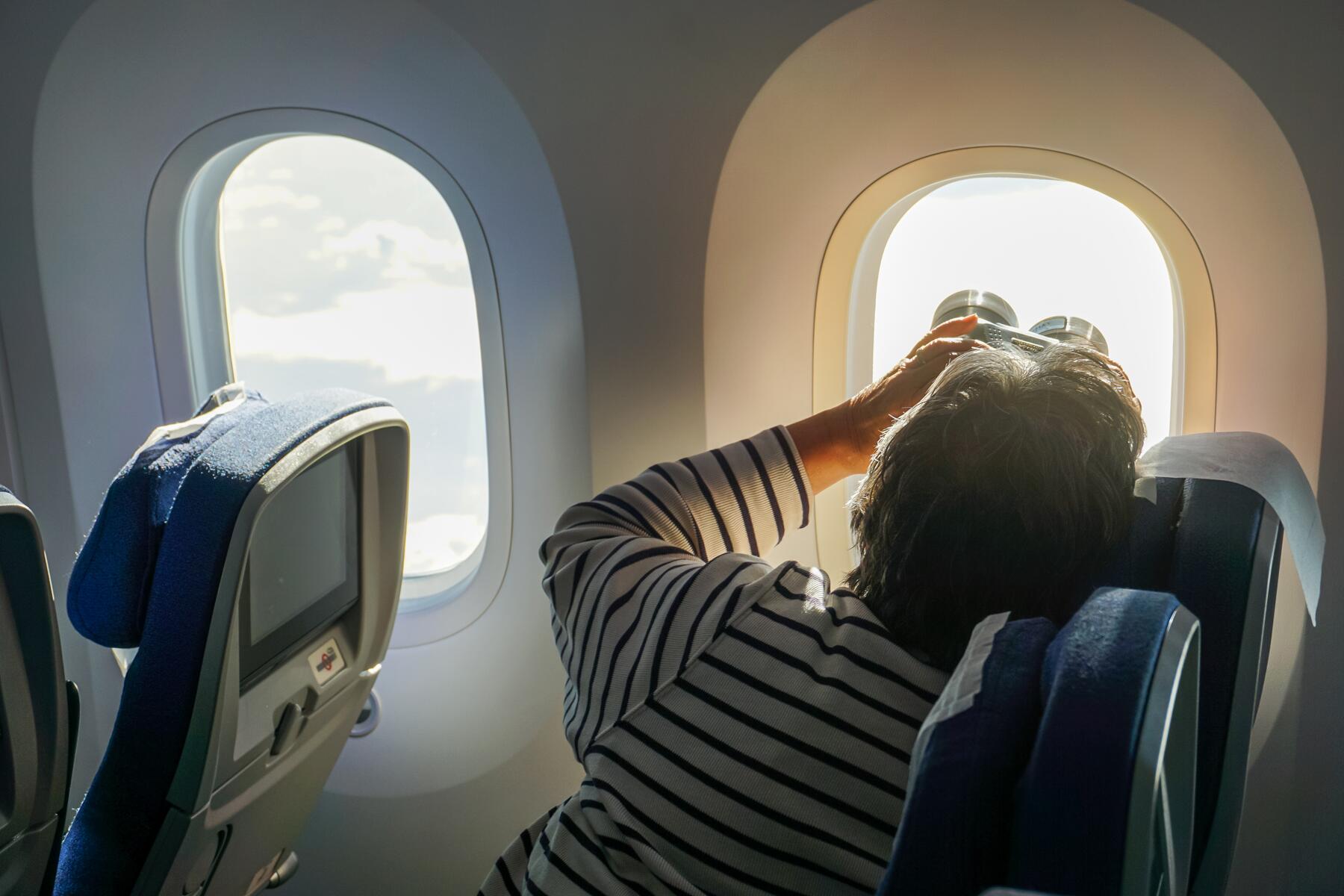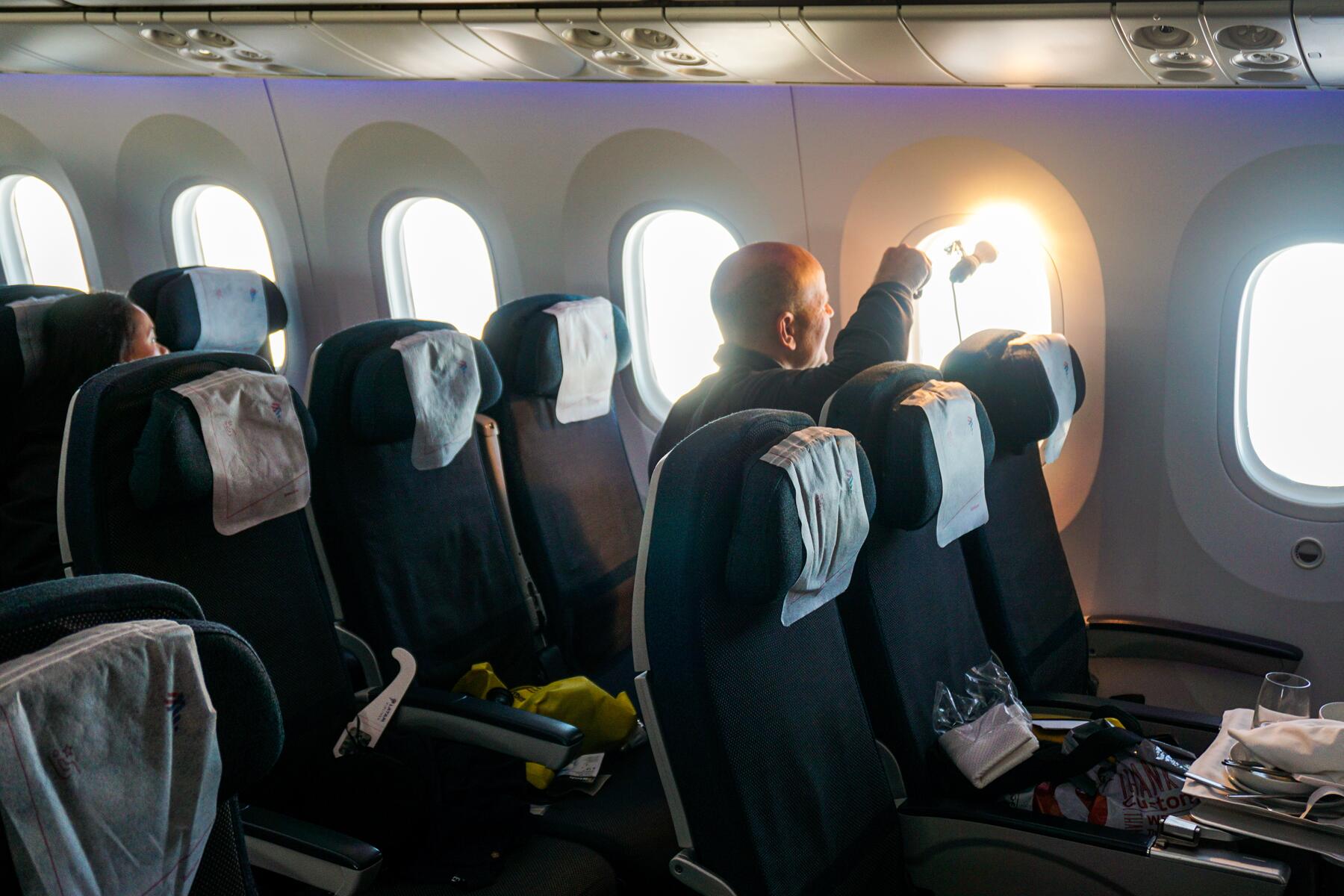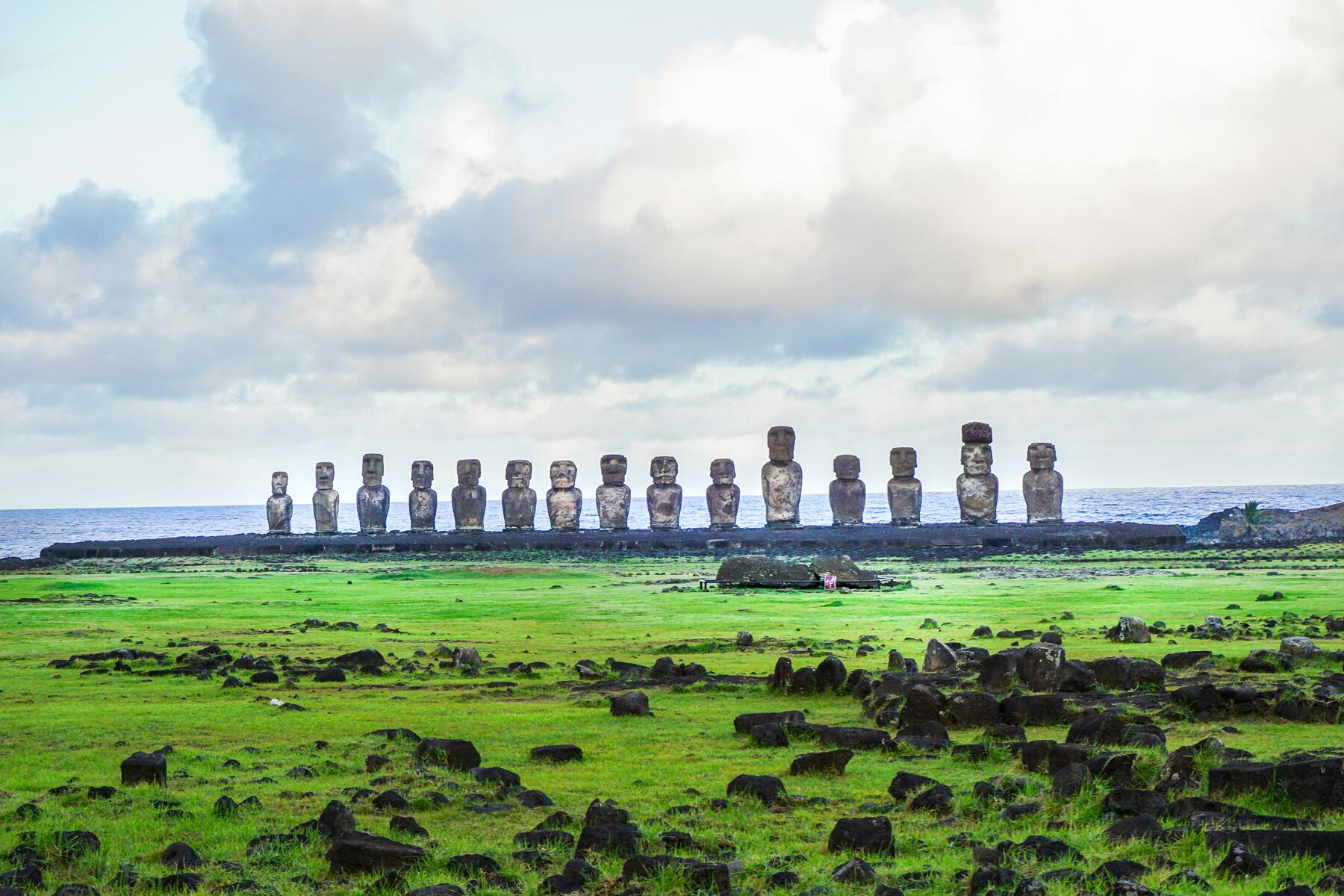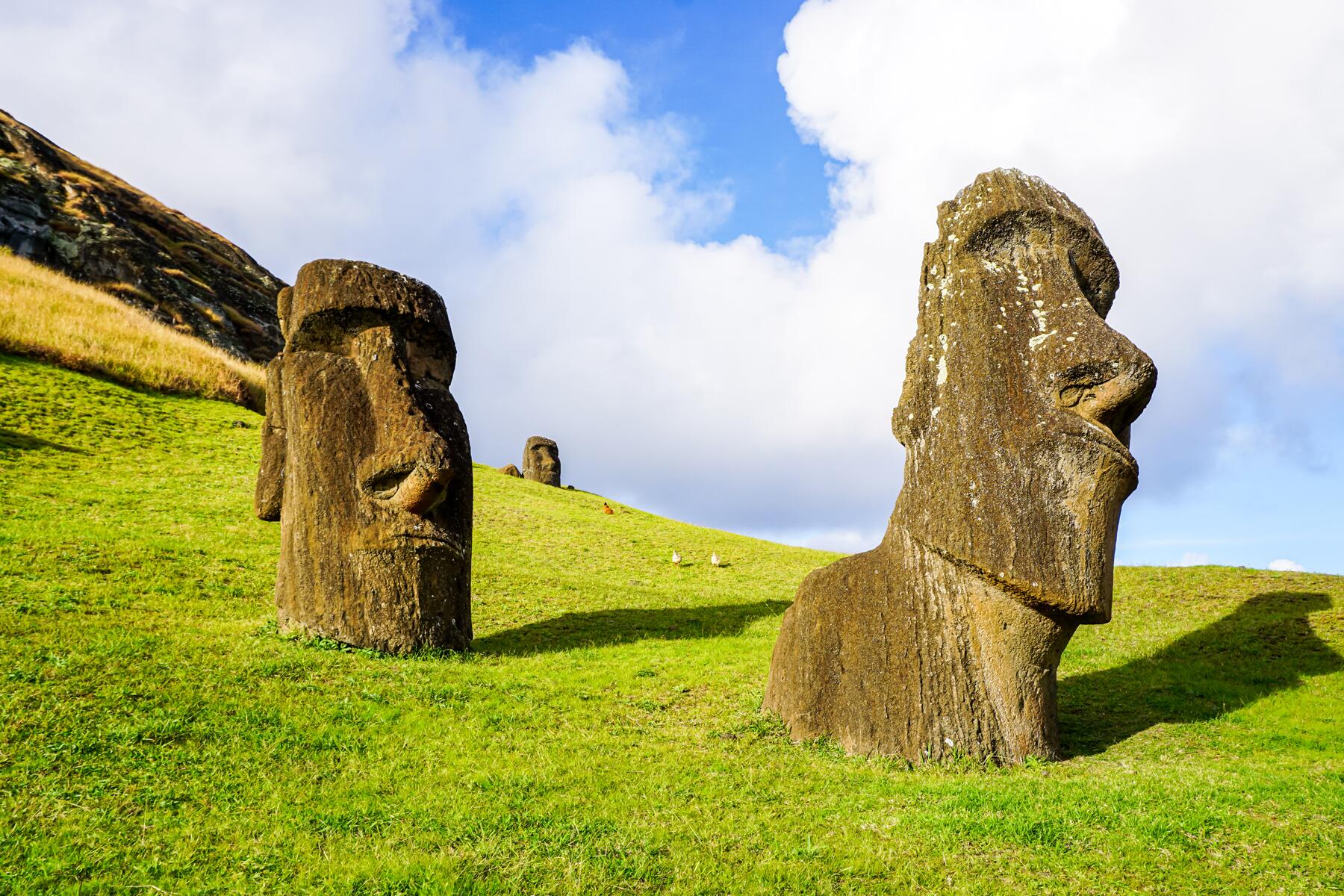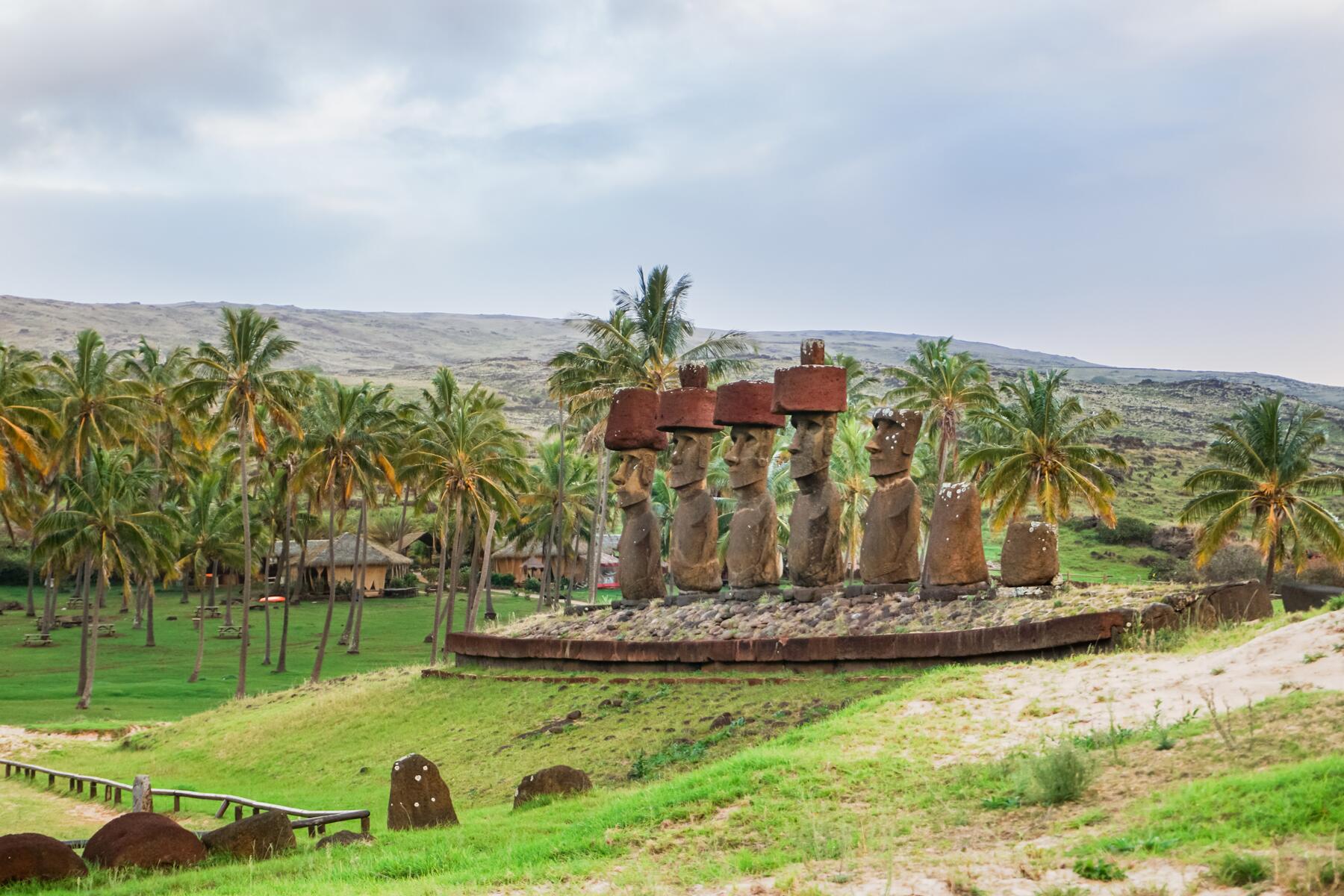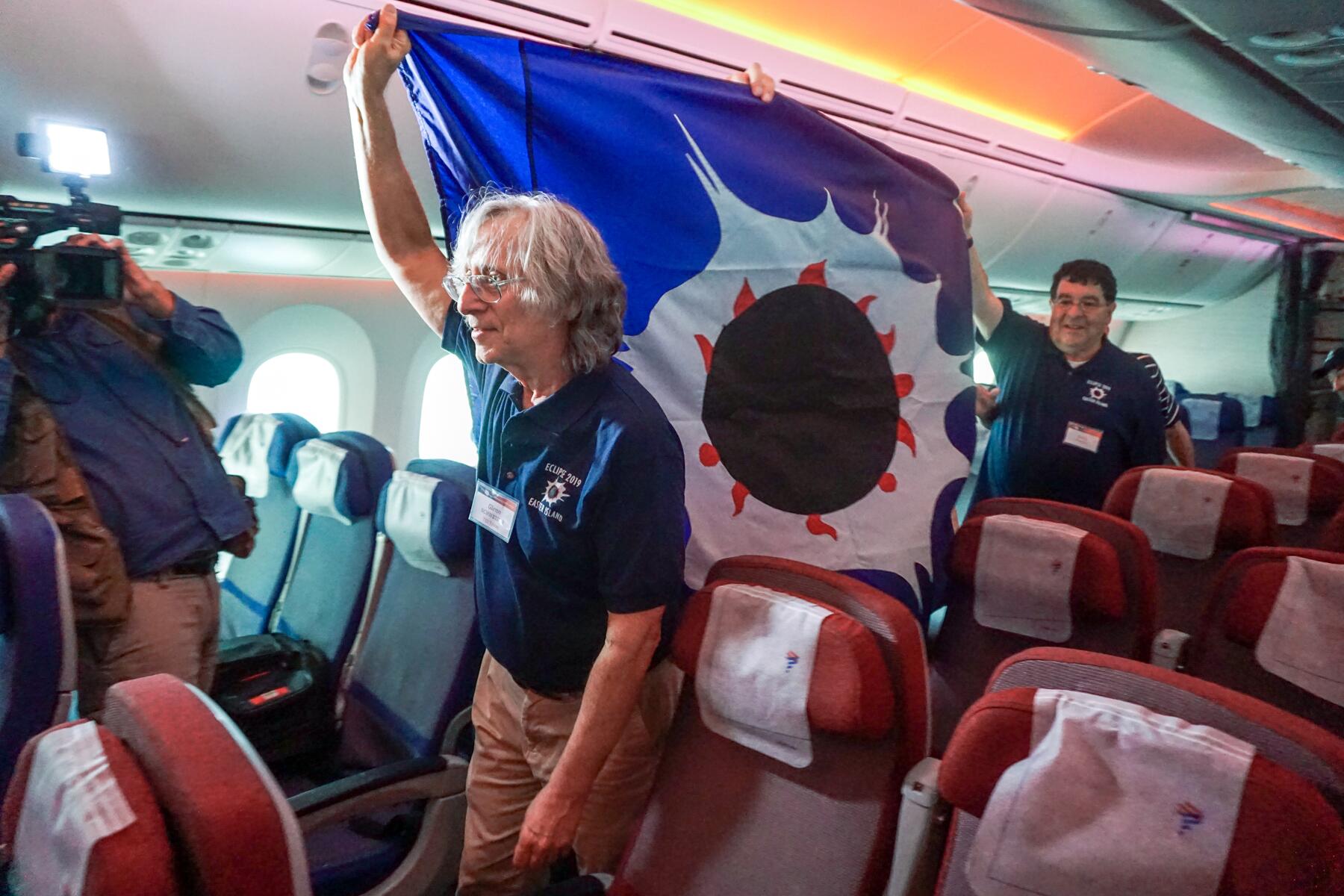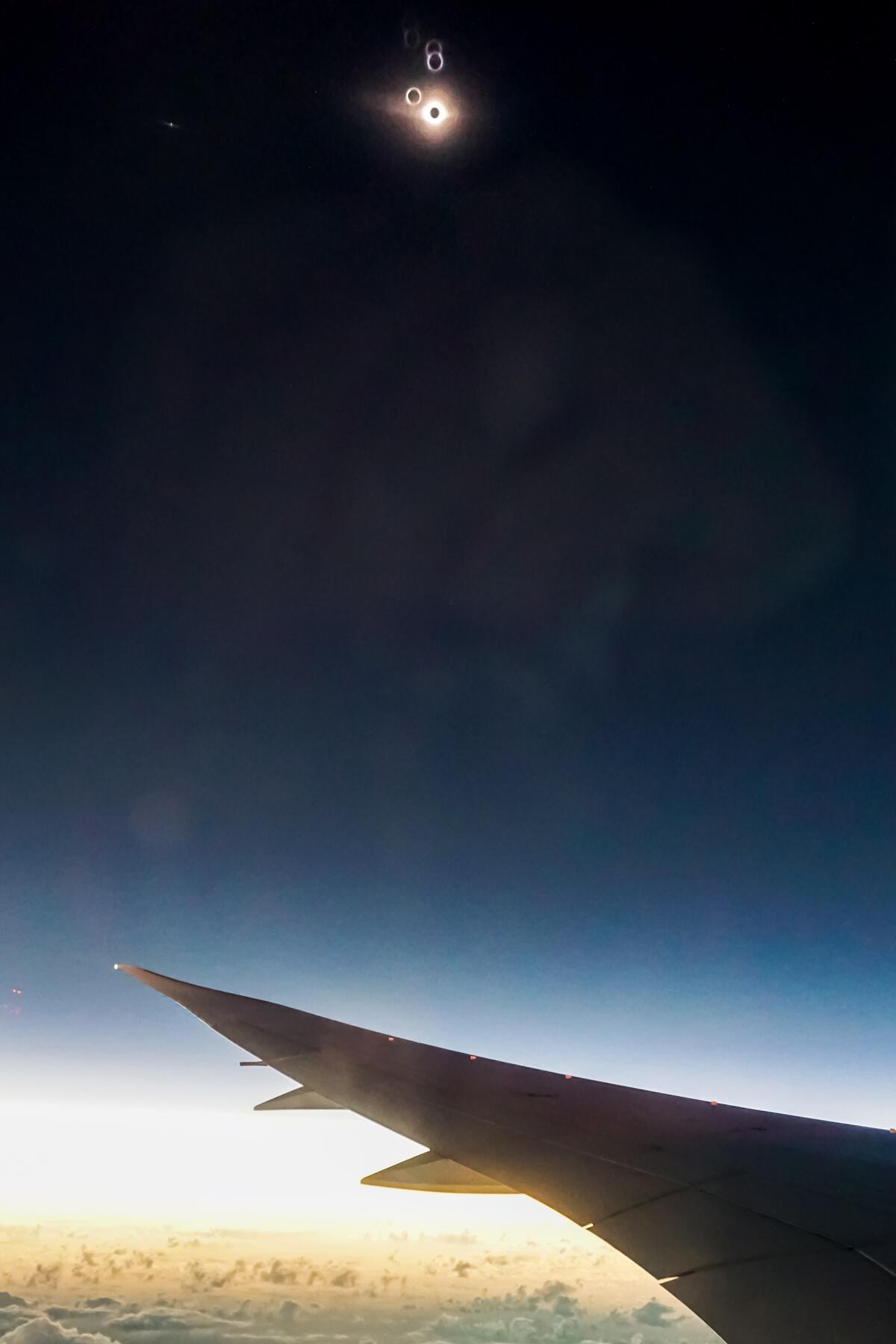“I would never spend this much money on a flight to anywhere, but on one that goes nowhere? Sure, I’ll spend it.”
The man overheard saying this had a mop of salt and pepper hair and wore a polo shirt—he was handsome enough but didn’t look monied. Yet, he’d doled out somewhere in the neighborhood of $5,000 for a flight that departed Easter Island on July 2, 2019, at 9:50 a.m., flew northwest, circled once, continued due west, then doubled back due east, and returned to Easter Island at 3:15 p.m.
He got off cheap. There were others who spent as much as $12,000 for the same thing. And they couldn’t have been happier. They’re part of an elite group, those who wander this world every year or two in search of the ideal spot from which to view a total solar eclipse—or, in their lingo, a TSE. They’re the Eclipse Chasers.
To Catch an Eclipse
It could have been the start of an Agatha Christie novel. Forty-eight strangers gathered together at the small airport on one of the most remote inhabited islands on earth. Many were impressive, many with bucks in their pockets, almost all of them charmingly eccentric. There was the trial lawyer, the gynecologist, the venture capitalist. Together, stuck in an airplane, they would be plunged into total darkness for over eight minutes as the sun vanished behind the moon. What would become of them?
Recommended Fodor’s Video
Tim Todd, who owns TEI Tours, organized this entire endeavor. If this were a Christie mystery, he’d be the mysterious man who summoned the guests to a distant manor for a night of dinner and murder. A clever Englishman (naturally—this is Agatha Christie!) with an angular face, he darted throughout the airport on the morning of the eclipse, barking at the staff while herding his clients, including the most important of them all: the scientist, Dr. Glenn Schneider.
Several of the attendees whispered, “You know Dr. Schneider is doing an experiment today on the plane.”
Dr. Schneider played the part of a scientist well: wild eyes hidden behind spectacles and even wilder locks of uncombed gray hair. He’d not been here purely for his love of TSEs, but for science, of course. In his possession were multiple suitcases, each loaded to the brim with more Tupperware than the average kitchen cabinet, all of which held who-the-hell-knows-what. Several of the attendees whispered, “You know Dr. Schneider is doing an experiment today on the plane. Something to do with the eclipse.” They were all intrinsically interested—or perhaps jealous—of the record Dr. Schneider would soon conquer. This would be his thirty-fifth TSE, the most witnessed by any person alive—even representatives of Guinness World Records were here to certify the startling achievement.
The planning for this momentous occasion, for TSE 35, began immediately following the conclusion of TSE 34, the Great American Eclipse of 2017. Dr. Schneider charted the flight route and Tim Todd chartered the plane through LATAM Airlines, which is the only commercial airline to operate in and out of Easter Island, flying daily from Santiago (2,300 miles away) and weekly from Tahiti (2,600 miles away). Typically LATAM uses a Boeing 787 Dreamliner for this route, equipped for 304 passengers. So that’s the plane Tim Todd would need to lease from the airline. The cost? Neither party would confirm the price, but it’s been estimated at roughly $200,000—a lot of money for eight minutes of a lunar shadow.
Contingency? What Contingency?
LATAM usually operates two daily flights from Santiago to Easter Island—the first, flight number 843, arrives at 9:55 a.m.; the second, flight number 841, at 12:55 p.m. But on July 2, they upended the schedule—flight 843 departed over three hours early, at 3:10 a.m., and arrived at 6:35 a.m. This was the plane that, after landing, would be turned over and prepped to whisk everyone off to stare at the vanishing sun. It was a tight schedule, so everything had to run smoothly.
To ensure flight 843 took off on time, a second back-up plane was placed on standby in Santiago. But, what if there were airport delays in Santiago? The question arose the Friday before the eclipse. Tim Todd, the organizer, had a potential solution: Dr. Schneider and most of the Chasers were already aboard flight 843, en route to Easter Island, so LATAM would simply need to redirect that flight to Dr. Schneider’s coordinates to ensure they wouldn’t miss the eclipse.
Though novel, the idea was somewhat silly. But, Todd often went to great lengths for a TSE. In 2016, he chartered a Japanese fishing vessel in the island of Yap in the Federated States of Micronesia and sailed for two days to the Woleai Atoll, where he made an offering of cigarettes to a local chief; this allowed him to stay for four days. All to see four minutes of totality.
However, this contingency plan proved too much. LATAM said no. And even Todd agreed with that sentiment. Not only was it potentially illegal—it could be argued that it amounted to hijacking an airliner full of unwitting passengers—but the plane wouldn’t be equipped with enough fuel to wander so far off course for an indeterminate amount of time.
Further, there was no plan in place should the Dreamliner reach Easter Island and then be delayed either due to mechanical failure or weather. Like almost everything on Easter Island, its airport has an unusual story. There’s a single runway, which is 10,885-feet long (the exact length of one of LAX’s four runways)—it was lengthened under the Reagan administration at the request of NASA after it was designated a remote shuttle abort site. For safety purposes, once an aircraft is within the half-way point between its origin and the island, no other plane can be in the air. That’s due to the concern that should there be an emergency landing that would shutter the runway, nearby planes would be stranded in the sky, incapable of touching down. The back-up plane would remain parked 2,300 miles away in Santiago.
No, if the Dreamliner suffered any delays, the entire thing would be over—the mission fittingly aborted at a NASA-designated abort site. With so much at stake—the cost, the record—everything had to go exactly according to plan.
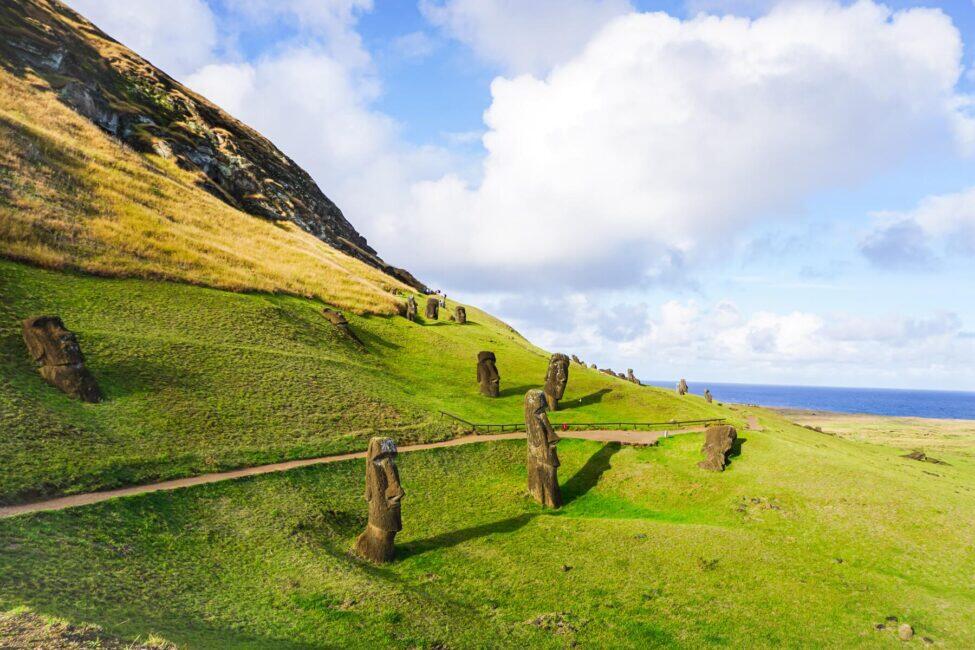
The Small Island of Giants
It’s hard to grasp just how far away Easter Island is from anything else. From its shoreline, there’s nothing but endless waters—and it’s exactly the same while surveying the landscape from 35,000 feet in the sky while traveling 500 miles per hour. The closest neighbors are 1,200 miles west in Pitcairn, a British island of 50 people, all descendants of the mutineers of the HMS Bounty. But it’s the utter isolation of Easter Island that makes its initial discovery—which happened who-the-hell-knows-when but probably a thousand years ago, give or take a century or two—and its remarkable contribution to the imagination of the world in the monolithic form of the giant heads of the Moai all the more incredible.
It all looks so alien. And that’s before you gaze upon the giants.
Most of the history of this volcanic land comes through the oral tradition of the Rapa Nui, the indigenous people who comprise of over half the population of the more than 6,000 who call these 63-square miles home. As the story goes, Hotu Matu’a, a Polynesian King, was told by a gentleman called Hau-Maka of a dream he had of a beautiful island to the east—a fortuitous premonition as they needed to flee their own island, either because it was being swallowed by the sea or they were being pushed out by a rival king (as with almost all stories here, the truth is lost to time). The king ordered seven men to find this distant shore and when they did, the whole of the kingdom rolled up via canoe.
It is now, as it almost certainly was then, an unnaturally beautiful island. Formed of three long-dormant volcanoes, the rusted soil and rock give it an otherworldly quality. And, yet, against this austere atmosphere is lush grass strewn across rolling hills. There’s a strange mist-like rain that showers without warning against a clouded-yet-sunny sky, creating an abundance of rainbows and lends to an Eden-like panorama. There are few trees, though there used to be many prior to long-ago deforestation—and any that exist now were planted within the last 80 years. It all looks so alien.
And that’s before you gaze upon the giants.
At some point between 1100 and 1250 A.D., the first of the Moai was born. It’s unknown which exactly of the nearly 1,000 stone behemoths was the first, or if he even still exists, but one thing is for sure: each generation who made them wanted them to be larger than the generation before, so the older they are, the smaller they stand. And they’re all big. They’re almost all born from the volcanic quarry of Rano Raraku on the southeast of the island, carved directly from the earth and yanked out to life, as though a newborn from a C-section. Their heads are long, noses sharpened, lips pursed, and their lower halves foregone. From here, they were transported throughout the islands and erected as (quite literal) headstones. They mark the burial grounds of ancestors, sometimes of an individual, sometimes of an entire family line.
The heads dot the island like crooked teeth, leaning hither and thither from the mountains to the shores. Somewhere around 1500, the last of them was born. The green hills of the quarry of Rano Raraku, the most famous of the sites, remain littered with them. All of these are in mid-production, not ready to be shipped off the assembly line. It’s thought that the Moai that remained in the quarry are a portrait in time, like the volcanically-wrapped corpses at Pompeii—something happened, probably war, that ceased production.
But still, these giant heads live like residents on a land of strange and beautiful soil at the end of the word—together it exists as though it’s a living, breathing Salvador Dali painting. And yet, on the morning of July 2, 2019, an even more surreal sight fled the island.
Grab Your Windex and Binoculars, This Flight Is Taking Off
Though they may read as Agatha Christie characters, or modern adventurers—and they may very well be—the Eclipse Chasers sure didn’t act the part when gathered together on LATAM Flight 1240 from Easter Island to nowhere. They’re an older crowd and very intelligent, but they acted like nervously giggling adolescents before a school dance, with scientific fervor standing in for raging hormones.
They took their assigned spots—those in the very comfortable lie-flat business-class seats paid the roughly $12,000 fare, those in economy $5,000. Everyone had a window on the left side of the plane. Despite being an unusually empty flight, it all operated normally: carry-ons were stowed, the safety video rolled, the plane took off. But, by instruction of Dr. Schneider, LATAM made a few modifications: the dimmable windows were locked undimmed, the heat blasted to avoid window condensation, and, most alarmingly to some, the drinks service canceled—alcohol decreases the eye’s sensitivity to light and would negatively affect a passenger’s ability to experience the full glory of the TSE.
“The eclipse has begun. There is no changing it and there is no going back.”
At cruising altitude, the seat-belt sign flashed off and all scrambled for their bags. Out came cameras, tripods, special lenses. The passengers slid on their LATAM-branded sun-filtered cardboard eclipse glasses. One lady stared through her binoculars, muttering under her breath, “Not one sunspot. Not one.” Another man plugged in a light bulb and waved it over the window as though he were casting a spell. Several reclined on their backs, arched their necks, and stared upside down through cameras aimed outside. Aisle after aisle showcased a menagerie of peculiar people and their strange tinkering with various devices. If this were any other flight, any one of them would have been immediately arrested on terrorist suspicions.
In business class, Dr. Schneider raced around silently, unsealing his Tupperware and organizing his makeshift laboratory. At varying intervals, one of the Chasers would bombard him with questions, usually “What time is first contact?” Though initially patient, Dr. Schneider eventually barked back to a poor fellow, “I don’t have time for this!”
Over the loudspeaker, an interruption came. A crisis brewed. “Um, excuse me?” said one of the Chasers. “Has anyone seen a bottle of Windex? We’re missing a bottle of Windex.” They needed it to ensure that windows were crystal-clear and streak-free. “Oh, you found it? Oh good!” Crisis averted.
The plane began to circle the open waters of the Pacific and the heat continued to pummel the passengers. Even those without sensitive stomachs would be forgiven for running to their barf bags. But all kept on smiling.
At 11:27 a.m., a man named Craig Small, who has seen 33 TSEs, only one fewer than Dr. Schneider, began to run through the airplane as though he were Paul Revere, proclaiming, “First contact has begun! First contact has begun!”
The spectators gasped and bolted to the windows, many of them muttering, “It’s the first bite!”
A reporter cornered Craig Small and asked him what exactly first contact meant. “This means,” he replied, looking directly into an iPhone recording him, “the eclipse has begun. There is no changing it and there is no going back.” Ominous.
It was at this point that many viewers put on their eye-patches. You read that right. They wanted to rest their dominant eye. When asked why, it was explained in the manner of the Wolf to Red Riding Hood, “All the better to see the eclipse.”
Why all this madness? Why go to such lengths to see this? After all, it could be seen from the ground—right there on Easter Island.
Meanwhile, Back on Land
“Yeah, I saw the eclipse. You could see it down here. I don’t know why you went up there.”
Hugo, a local tour guide, was born and raised on Easter Island. He is handsome, rugged, and wears a shark-tooth earing. Even though he wasn’t the one with an eye patch, he looks a bit like a pirate. He smirked when hearing about the Eclipse Chasers in the Dreamliner, shook his head a little, and said under his breath, “Crazy.”
For five years, Hugo had lived in Woodstock, New York, and returned only a year ago. He knows almost everyone in these parts and is related, however distantly, to many. The mayor is his uncle, the governor his aunt—separate aunt and uncle, they’re not married. He has too many cousins to count. While walking with him, it’s like being with a celebrity—he says hello or high-fives someone almost everywhere he goes.
He lives about 10 minutes by car outside of the island’s one and only town, Hanga Roa. It’s a small city with one main artery, Atamu Tekena, on which just about everything of governmental or commercial significance resides: parliament, the LATAM office.
“If you’re not on this street,” said Hugo, “you’re pretty much off the grid.”
Only about half the population of Easter Island lives in Hanga Roa, the other half like Hugo—off the grid. Most everything off the grid is solar-powered, and many locals grow their own food or go out fishing. Cell service is spotty and Wi-Fi practically non-existent. There’s little to do, but there’s a popular nightclub in the city—Nativa.
“People usually show up around 11 p.m. and leave at 2,” Hugo said. “It can get a little intense, rowdy. Bar fights, mainly over stupid things. ‘I saw you out with my cousin last night, but today you’re out with a different girl.’ That kind of thing.” It’s hard to tell if it’s busy inside the windowless establishment. “If there are a lot of motorbikes outside or horses tied up, you know there’s a crowd.”
Wild horses roam the open fields through Easter Island—they’re a mutt breed of Argentine and mustang, their hooves tough enough to withstand the hard volcanic grounds and their stomachs strong enough to survive on foliage. If they’re not branded, they’re up for grabs—hop on them as if they’re an Uber, but be warned: riders had better be experienced and know how to break them in. But, with gas costing $8 per gallon, it’s a palatable mode of transportation.
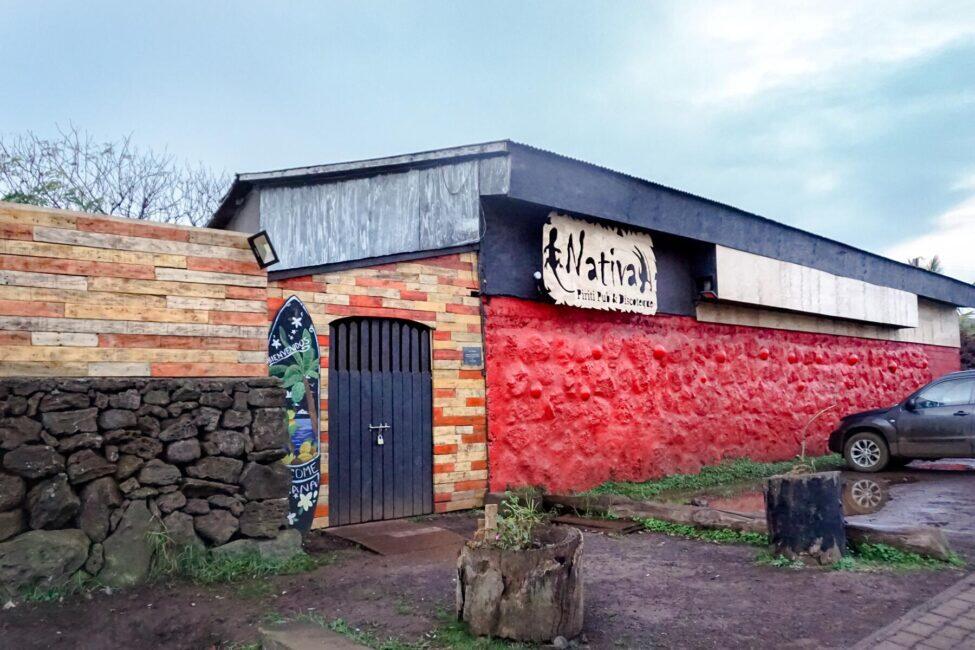
Despite how different Easter Island may be from what many visitors are used to, it’s changed rapidly in the last few decades. Hugo’s great-grandmother used to live in a cave, which was not uncommon. Dwellings for the Rapa Nui were sparse well into the ’60s and ’70s. But, it was also a time when indigenous rights were almost nonexistent. Chile annexed Easter Island in 1888 and handed it over to the Scottish company Williamson-Balfour, which transformed the whole island into a giant sheep farm. Stripped of their land, the Rapa Nui were confined to Hanga Roa. It wasn’t until 1966 that they were finally given Chilean citizenship and only in December of 2017 that their ancestral property returned to them. Today, they own, control, and operate all of the Rapa Nui National Park, which occupies roughly 40 percent of the land here.
With the growth of the airport in 1987 and the expansion of the number of flights, tourism is now booming—roughly 120,000 people visit annually, up from 5,000 only 30 years ago. It’s brought a fair amount of problems—often times from bad behavior, like the Finnish man who snapped off the earlobe of a Moai to keep as a souvenir—and the word “over-touristed” is routinely bandied about.
According to Hugo, tourists are viewed by the locals with a fair amount of skepticism. Rightly so—outsiders have long exploited the Rapa Nui. And tourists largely remain confined to their hotel rooms and the park, rarely wandering out to places like Nativa or interacting with the people who actually live here—whose ancestors birthed these giants from the mountains. Conversely, to many who live here, tourists are just walking, talking money. Just like the walking, talking money shelling out a minimum of $5,000 for a plane chasing the eclipse—when it could easily be seen from below.
But, down on the solid volcanic rock of Easter Island, the eclipse wouldn’t reach pure totality, only about 93 percent. Further, the length of time of this partial eclipse was a meager four minutes. While up in Dr. Schneider’s Dreamliner of Chasers, it lasted over eight.
Eight Minutes in Heaven
At 1:19 p.m., it happened. The flight to nowhere reached its destination: totality.
After the stomach-churning loop, Flight 1240 flew due west and doubled-back due east, when the plane would begin to chase the eclipse, to lengthen totality. Many who’d been staring at the live updating flight-path on the seatbacks noticed it had been an almost deliberately phallic route.
Their bodies shuddered, their minds emptied of worry. They existed in ecstasy.
Tim Todd had been delivering regular updates over the loudspeaker, alerting the passengers of the time, and ensuring everyone was in place for 1:19 p.m. Over the prior 30 minutes, darkness tightened its grip on the plane and right on time it took its firmest hold. When the moment of totality arrived, they slid off their special glasses—it could be seen without harm to the naked eye. Many of the Chasers then simultaneously exclaimed as if they had rehearsed it and were being conducted by Toscanini, “Oh. My. God!”
“That’s the sound,” shouted one of them. “That’s the sound everyone makes their first time: ‘Oh my God!’ And isn’t it gorgeous?!”
Rapturous shouts echoed throughout. Flight attendants gathered ’round the windows, desperate to see it for themselves.
“Diamond ring,” Craig Small declared. “Diamond ring!” The uninformed on the plane cocked their heads, assuming he’d either lost an heirloom or his mind, before being informed that he had been alerting them all to the optical effect when only a single mountain of the moon shines through, resting atop a ring of fire, giving the appearance of, yes, a diamond ring.
Some of those in attendance cried that afternoon. Despite the darkness, their expressions were clear. Their bodies shuddered, their minds emptied of worry. They existed in ecstasy—awe that went beyond happiness or pleasure. They floated beyond even the 41,000 feet at which they watched, their souls ascended somewhere else. “Oh my God” was an accurate exclamation. This moment existed beyond the temporal experience. It was spiritual. It was divine.
And then it ended. Light returned and so, too, did normalcy. A great big exhalation released throughout the cabin as though they’d all sobered up from an orgy. You could almost imagine everyone clamoring for a cigarette.
“First timers,” someone said creepily over the loudspeaker, “you’re no longer virgins. And the first time is always better than you expected.”
A procession began up and down the aisles led by Dr. Schneider. He held tightly to one side of a flag embroidered with an eclipse (naturally) while Craig Small, the keeper of the flag, grabbed the other. It’s been brandished at every single TSE since 1983, with the exception of the Antarctica TSE of ’85, which no human being witnessed. It almost didn’t make this one—a problem at Newark Airport delayed Craig Small’s flight to Chile by more than a day. He barely caught the early flight to Easter Island. But, now he smiled euphorically and cheered on his friend, Dr. Schneider, who had now officially witnessed the most TSEs ever.
As the parade fizzled out, so too did the Chasers. They were tuckered-out tots who’d woken too early for Christmas—the presents had been unwrapped and now came the sudden desire for sleep.
One More Mystery
Atop the hill of Ahu Akivi, seven Moai face outward to the sea. Of the nearly one thousand Moai brought to life at Rano Raraku and dragged across the island, these are the only who don’t look inward. They represent the seven who were first sent by the Polynesian king Hotu Matu’a to discover this remote paradise. Now, preserved in volcanic tuff, their likenesses gaze back to the long-distant shores from where their ancestors once set sail in pursuit of a vision of someplace better. Or, at least, that’s how it goes according to the oral tradition. Their exact meaning, their past, their existence, like all the other Moai, remains mysterious—passed orally from generation to generation for centuries, like a multi-generational game of Telephone. And, because of this, people will always wonder why they did this. What is the meaning? Why are they here?
The same can be asked of the Chasers.
When the LATAM Dreamliner returned to Easter Island, it landed with a thud of melancholy. As the Chasers disembarked, their expressions, now drooped with exhaustion and wizened by their proximity to God, held a strange resemblance to the long, stoic faces of the Moai. And, like the Moai, they now scattered across the island, each in their own direction.
They’re a unique lot, these Eclipse Chasers, cut from the same cloth—or carved from the same mountain, their own Rano Raraku that churns out determined adventurers who will stop at nothing to experience mere minutes of otherworldly darkness. Others may think them preposterous, may never fully grasp the drive or yearning for such a pursuit—it’s wrapped in a mystery that’s trapped in their own heads. That’s just how it goes with most people, now and always.
